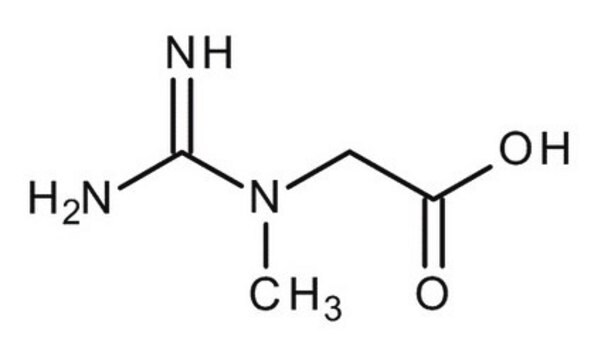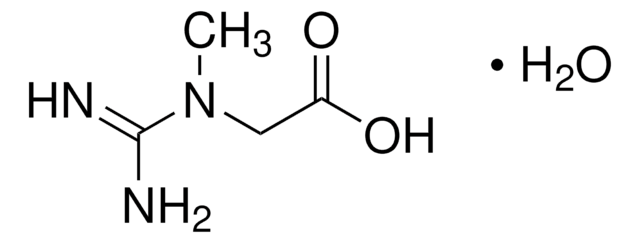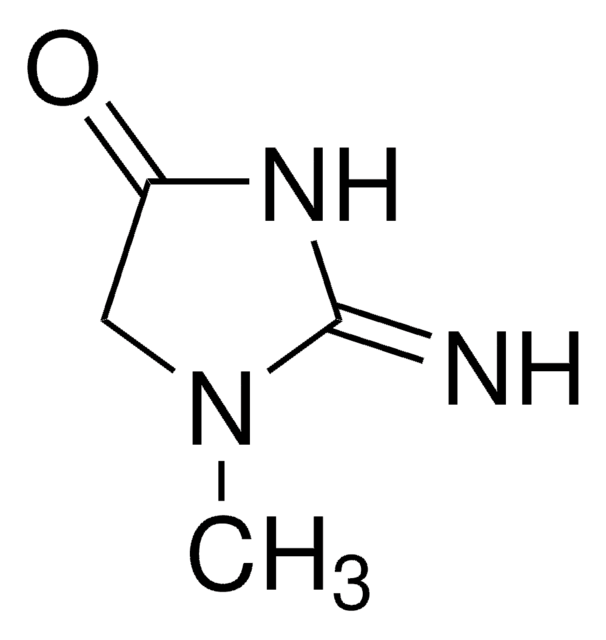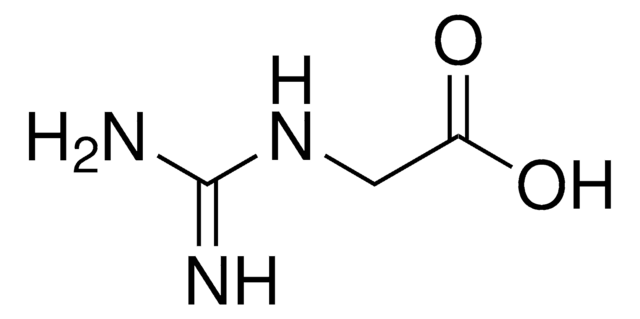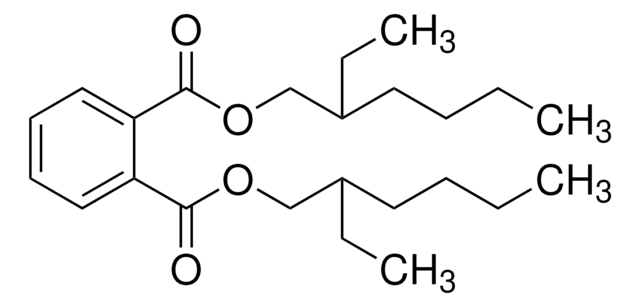C3630
Creatine monohydrate
≥98%, suitable for cell culture
Synonym(s):
Creatine hydrate, Creatine, monohydrate, N-(aminoiminomethyl)-N-methyl-glycine hydrate
Sign Into View Organizational & Contract Pricing
All Photos(1)
About This Item
Empirical Formula (Hill Notation):
C4H9N3O2 · H2O
CAS Number:
Molecular Weight:
149.15
Beilstein:
7942755
EC Number:
MDL number:
UNSPSC Code:
12352209
PubChem Substance ID:
NACRES:
NA.26
Recommended Products
Product Name
Creatine monohydrate, ≥98%
Quality Level
Assay
≥98%
form
powder
technique(s)
cell culture | mammalian: suitable
color
white to off-white
mp
292 °C
SMILES string
O.CN(CC(O)=O)C(N)=N
InChI
1S/C4H9N3O2.H2O/c1-7(4(5)6)2-3(8)9;/h2H2,1H3,(H3,5,6)(H,8,9);1H2
InChI key
MEJYXFHCRXAUIL-UHFFFAOYSA-N
Looking for similar products? Visit Product Comparison Guide
Application
Creatine (Cr) and phosphocreatine (PCr) are involved with rapid ATP production primarily in skeletal muscle tissue via the action of creatine kinase(s). Creatine may be used as a supplement to study its uptake mechanism and metabolism of action.
Biochem/physiol Actions
Creatine is a nitrogenous compound that acts as a high-energy reservoir for the rapid regeneration of ATP.
Creatine is a nitrogenous compound that acts as a high-energy reservoir for the rapid regeneration of ATP. Approximately 95% of creatine is found in skeletal muscle, primarily as phosphocreatine. Creatine can be acquired through dietary consumption or formed from L-arginine, glycine, and L-methionine in a multi-step reaction that occurs in the kidneys and liver. Creatine is then transported to muscle tissue. Creatine supplementation is used for the enhancement of sports performance, primarily by increasing muscle mass. Creatine is also being investigated as a treatment of neuromuscular diseases, where it may aid in neuroprotection and by improving the cellular bioenergetic state.
Storage Class Code
11 - Combustible Solids
WGK
WGK 3
Flash Point(F)
Not applicable
Flash Point(C)
Not applicable
Personal Protective Equipment
dust mask type N95 (US), Eyeshields, Gloves
Choose from one of the most recent versions:
Already Own This Product?
Find documentation for the products that you have recently purchased in the Document Library.
Customers Also Viewed
Jeffrey S Martin et al.
Journal of the International Society of Sports Nutrition, 14, 38-38 (2017-09-30)
We sought to determine if a pre-workout supplement (PWS), containing multiple ingredients thought to enhance blood flow, increases hyperemia associated with resistance training compared to placebo (PBO). Given the potential interaction with training loads/time-under-tension, we evaluated the hyperemic response at
Andrina Stäubli et al.
Human molecular genetics, 26(21), 4203-4214 (2017-11-01)
Membrane transporters influence biological functions in the ocular lens. Here, we investigate the monocarboxylate transporter 12 (MCT12), also called creatine transporter 2 (CRT2), which is found in the ocular lens and is involved in cataract. As the age-related form affects
Caro-Lyne DesRoches et al.
Gene, 565(2), 187-191 (2015-04-12)
Creatine transporter deficiency (CRTR-D) is an X-linked inherited disorder of creatine transport. All males and about 50% of females have intellectual disability or cognitive dysfunction. Creatine deficiency on brain proton magnetic resonance spectroscopy and elevated urinary creatine to creatinine ratio
Clare E Turner et al.
The Journal of neuroscience : the official journal of the Society for Neuroscience, 35(4), 1773-1780 (2015-01-30)
Impairment or interruption of oxygen supply compromises brain function and plays a role in neurological and neurodegenerative conditions. Creatine is a naturally occurring compound involved in the buffering, transport, and regulation of cellular energy, with the potential to replenish cellular
Domenic A LaRosa et al.
Pediatric research, 80(6), 852-860 (2016-07-29)
Maternal antenatal creatine supplementation protects the brain, kidney, and diaphragm against the effects of birth asphyxia in the spiny mouse. In this study, we examined creatine's potential to prevent damage to axial skeletal muscles. Pregnant spiny mice were fed a
Our team of scientists has experience in all areas of research including Life Science, Material Science, Chemical Synthesis, Chromatography, Analytical and many others.
Contact Technical Service
